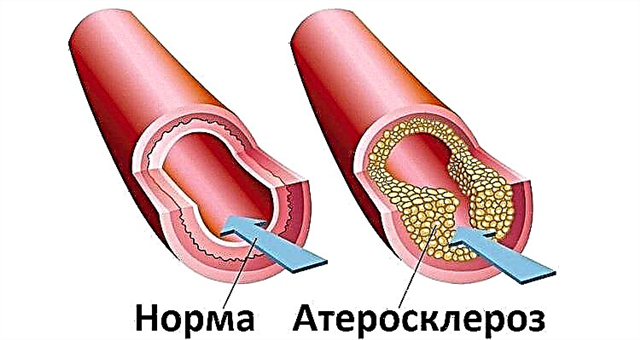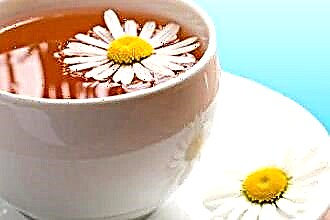The blue lamp, used in the treatment of colds and colds, is familiar to many from childhood - and as well as the usual mustard plasters in combination with hot foot baths. The procedure has gained wide popularity, since it does not require complex manipulations with complex devices, it can be performed even for a small child, and the duration of the session does not exceed 20 minutes. To carry out heating, you only need a special lamp installed in a lampshade that reflects light. The blue lamp is used for a large number of diseases, it is indicated mainly in the case of inflammatory processes of different localization. Warming up with a blue lamp with a runny nose will be useful in treatment if you know about the rules for use and contraindications.
Method essence
 Many people know about the blue lamp, but not everyone understands what it is and how it works. Can a nose and throat lamp really help with a cold? Does this treatment have side effects and contraindications? How to warm your nose with a blue lamp correctly? Of course, before starting to use the device, you should find out the answers to all these questions.
Many people know about the blue lamp, but not everyone understands what it is and how it works. Can a nose and throat lamp really help with a cold? Does this treatment have side effects and contraindications? How to warm your nose with a blue lamp correctly? Of course, before starting to use the device, you should find out the answers to all these questions.
The blue lamp for warming up the nose is called the emitter, or Minin's reflector after the name of the doctor who first proposed its use in the treatment of various pathologies. It is used not only in otolaryngology - warming up is useful for diseases of the musculoskeletal system, bronchopulmonary and genitourinary system. The device is a source of such types of radiation as:
- visible;
- infrared.
Visible radiation can be perceived by the organ of vision, while infrared radiation remains unnoticed, but it has a thermal effect - in many cases, quite noticeable. The degree of penetrating power (the ability to heat superficial and deep tissues) depends on the range of radiation. In this case, short-wave radiation can reach deep tissue structures.
The maximum emission of the blue lamp corresponds to the border of the short-wave and medium-wave ranges.
This means that the reflector is mainly used to warm the surface layers of the skin. The device includes a lampshade with a mirror surface and a handle for holding in the palm of your hand, as well as a blue incandescent lamp. It is composed of cobalt glass, and its power ranges from 25 to 60 watts.
What are the benefits of a reflector? A blue lamp with a cold has an effect:
- Anti-inflammatory (in particular, decongestant).
- Local analgesic (helps to eliminate pain).
- Metabolic (intensification of metabolic processes in tissues exposed to light).
The blue phototherapy lamps are also believed to be bactericidal.
Under the influence of radiation, the local temperature of the skin increases - they heat up by about 1–2 degrees. The consequence of this is, first of all, vasodilation and increased blood flow in the irradiated area. Sometimes you can come across the opinion that a lamp for warming up the nose is an alternative to dry heat, the source of which is used improvised means - bags of salt, boiled eggs.
Application rules
Diseases of the ENT organs are not an unconditional indication for the use of the Minin reflector. However, the device can be effective for some of them. It is often acquired by families with small children. The reflector is well received by many parents, but it cannot be considered an alternative to the treatment prescribed by a doctor. Before starting the procedure, it is best to consult with a pediatrician - the method has contraindications, the presence or absence of which must be verified by a specialist.
How to properly warm your nose with a blue lamp? Most often, the device is used in case of a cold caused by a virus of the respiratory group. To use the lamp, you must:
- connect the device to the mains;
- wait for heating;
- keep at a distance of 15–20 cm from the affected area;
- continue heating for 5 to 20 minutes.
Eyes should be protected from radiation by covering them with cardboard glasses.
Do not touch the lamp directly during warming up. The procedure can be repeated several times during the day. In this case, you should pay attention to the heating of the skin. The main requirement is a feeling of moderate, pleasant warmth. Expressed fever should not be allowed. This is especially important when treating children who are not always able to formulate specific complaints. Therefore, you should remember in advance how to use a blue lamp with a runny nose and stop the procedure if you suspect too much heating.
Contraindications
Can I warm my nose with a cold blue lamp? The answer to this question cannot be unambiguous. It all depends on the etiology of the common cold (rhinitis), that is, a disease that is manifested by nasal congestion and the release of nasal secretions. The lamp relieves the course of a cold coryza, but it should not be used if:
- Suppurative sinusitis.
- Acute purulent inflammation in the area next to the nasal cavity.
- Suspected neoplasm.
- Increased blood pressure.
- Severe fever.
- Bleeding.
Purulent inflammation is an absolute contraindication for warming up.
Sinusitis of any localization (in particular, sinusitis) is usually provoked by bacterial agents and is characterized by the presence of pus in the paranasal sinuses. Heat exposure is strictly prohibited. Instead of alleviating the condition, the patient may face formidable, life-threatening complications.
You can not use heat exposure with severe fever.
In the acute phase of the inflammatory process, when the body temperature is significantly increased, any warming procedures are prohibited. This is worth remembering when treating a patient of any age. During a fever, the body seeks to "dump" excess heat - it is not necessary to artificially increase the body temperature, even locally.
UV lamps
Warming up the nose with a blue lamp is not the only way of exposure to radiation for various types of respiratory infections. The UV lamp for the treatment of rhinitis is part of the emitting device equipped with a tube. There are portable (portable, home) lamps, but the most common UV devices can be found in physiotherapy rooms. They are also called quartz lamps, they are used in medical institutions not only in the complex of physiotherapeutic measures, but also in the treatment of premises in order to prevent the spread of pathogens of infectious diseases.
The principle of operation of a portable UV lamp is to direct ultraviolet radiation to the desired area of the body. The tube is inserted into the nostrils (and, if necessary, into the throat) in turn for a certain, strictly limited time. Begin with 1 minute, then gradually increase the duration of contact to 3-5 minutes. It is worth clarifying right away - these are general recommendations. The exact duration of exposure to UV rays should be determined by a physician, and radiation is prescribed as indicated.
The UV lamp does not warm up the nose.
Ultraviolet radiation has no thermal effect. It has a bactericidal, anti-inflammatory effect. UV rays also contribute to faster healing of wounds, reducing the severity of pain.
During the procedure, the patient should limit physical activity, breathe calmly and evenly. Before using the lamp, you must read the instructions, study the rules for processing tubes after irradiation. The device is not an alternative to drugs, medical procedures.
A prerequisite is eye protection.
Radiation should affect only certain areas of the mucous membranes - this is what the tubes are designed for. The lamp should not shine directly into the eyes. It is strongly recommended not to look into the case while the device is on.



